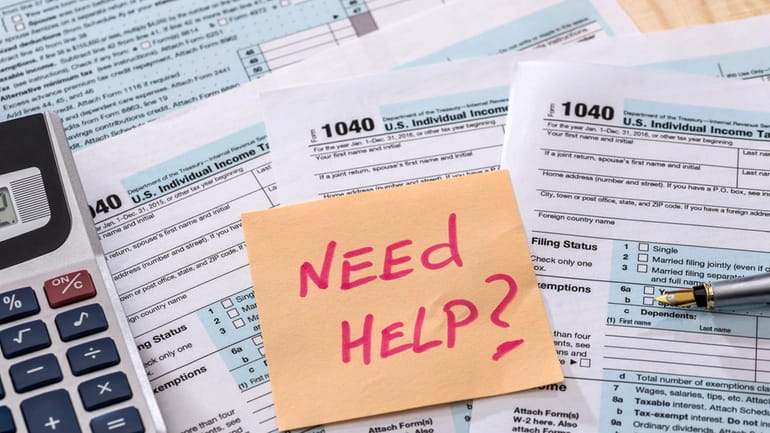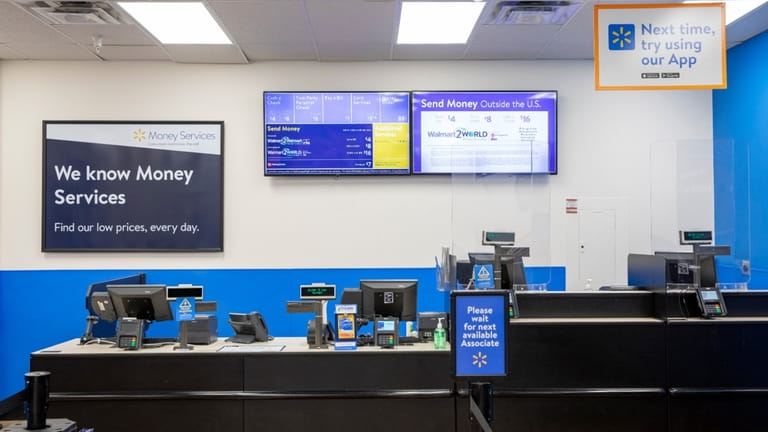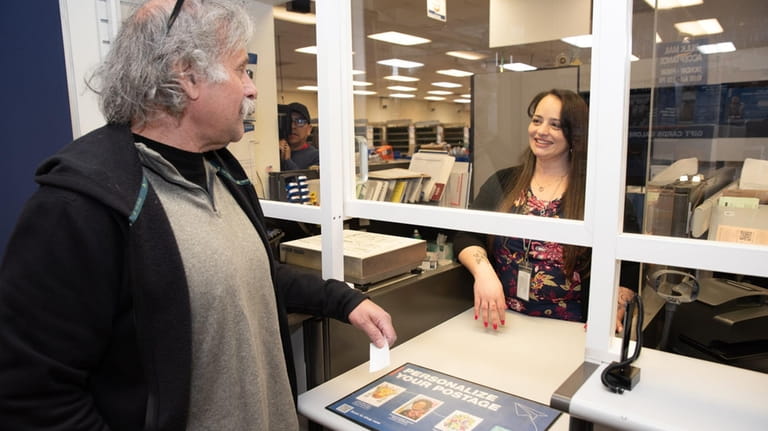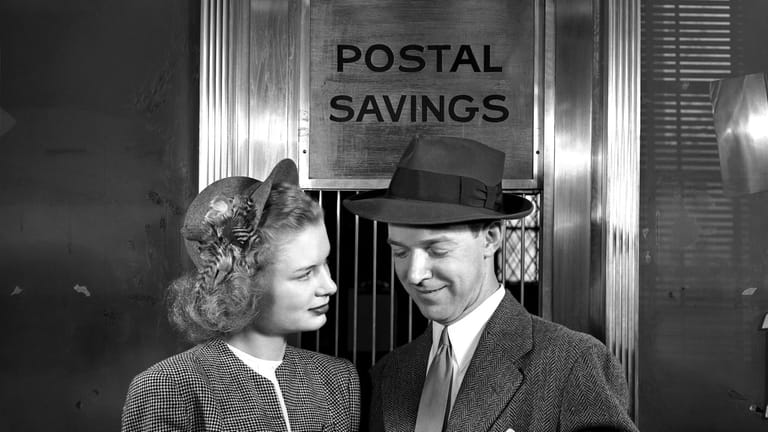Tax prep at Walmart, check cashing at the post office — these services might surprise you

The trend of businesses providing services outside their usual offerings can help build customer loyalty, a retail analyst says. Credit: Getty Images/iStockphoto/alfexe
If you’re looking to have your taxes prepared, cash a refund check, or get your driver’s license renewed, you can get some of these things and more done at three places that might surprise you — though they're all household names.
They’re Walmart, the post office and the American Automobile Association (AAA) — places you may pass by frequently, but would likely only visit for the services and offerings they’re most known for.
Did you know that one of these iconic places can even make a rent payment for you?
A couple also have bill payment and money transfer offerings that can be of help to the “unbanked” — the term used for the millions of Americans living in households in which no one has a checking or savings account at a bank or credit union. They allow the unbanked to pay bills and do other electronic money transactions with cash. And one of the businesses offers check cashing for no fee.
Businesses offering services and goods they're not primarily known for is a growing trend, according to Joe Feldman, a retail analyst for the Manhattan-based Telsey Advisory Group. "I think the bigger retailers in particular are creating a broader and 'stickier' ecosystem" by expanding what they have available.
"You can book travel, buy a car and have your HVAC contracted through Costco beyond being a member of the store and buying goods," Feldman said. He gave as another example that dates back years, large grocery stores offering pharmacy services. "It does work," he said of businesses embracing more of a one-stop shopping experience. "I do think the consumer likes the convenience."
Walmart
If you think you know just about everything the world’s largest retailer has to offer, this list may make you think again.
TAX PREPARATION
Walmart shoppers can have their taxes prepared at a Walmart store through a partnership with Jackson Hewitt. On Long Island, tax prep is available at the stores in Centereach, Valley Stream and Yaphank.
Like working with other tax preparation services, Walmart customers can book an appointment to sit down with an in-store Jackson Hewitt professional or schedule a time to drop off their tax documents. Tax preparation time and fees vary based on the needs and complexity of the return.
BILL PAYMENTS
Your rent can be paid at Walmart, along with a variety of other bills — including electric, gas, water, phone, cable, auto insurance, loans, mortgage and many more. Eligible billers can vary by market, but in many cases all you need to make payments is the biller’s name, your account number and payment amount. Some billers may require additional information, such as a photo ID.
You can pay your bill with cash or a debit card but not with a credit card.

Walmart offers services including tax preparation, money orders, check cashing and bill payments. Credit: Walmart
MONEY TRANSFERS
With MoneyGram, Walmart enables customers to send funds wherever they’re needed — whether it’s within the United States or internationally to destinations like Mexico, India, the Philippines and elsewhere.
Money can be sent to other Walmart stores in the United States and Puerto Rico, or you can opt for international transfers to MoneyGram agent locations spanning more than 200 countries. Choose from 10-minute or 4-hour domestic transfers. And for international transfers, there are same-day transactions available — subject to agent operating hours and compliance with regulatory requirements.
AAA
DMV SERVICES
Anyone who’s waited in long lines for service at a New York State Department of Motor Vehicles (DMV) site would probably agree the experience can drive you crazy. But what could be considered by many to be a well-kept secret is that American Automobile Association (AAA) members have available to them some DMV license and registration services at local AAA offices. On Long Island, the services are available at the AAA locations in Garden City, Farmingdale and East Meadow, and appointments are required.
The DMV offerings at AAA offices are courtesy of an expanded pilot program that started at AAA sites in New York City. You can obtain, replace and renew your driver’s license or non-driver ID cards and get duplicates of both; upgrade to Real ID or Enhanced ID licenses, apply for veteran status designation, change information like addresses, and have your registrations renewed, replaced or modified.
Effective May 7, 2025, federal law will require Real ID — instead of a standard license or non-driver ID card — for anyone 18 or older to board a domestic flight or access certain federal facilities. Other acceptable forms of identification for these purposes will include a valid passport or a U.S. military ID.
Enhanced ID is another option that is Real ID compliant. It is a New York State DMV-issued endorsement on a driver’s license, permit or non-driver ID that can be used instead of a passport to return to the U.S. by land or sea from Canada, Mexico or some countries in the Caribbean.
Also at AAA offices, valid licenses from other states or Canadian provinces can be exchanged within 30 days of becoming a resident of New York State.
In addition, the vision test required to obtain or renew a driver’s license can be done at the AAA sites.
You will need a current AAA membership to take advantage of the DMV services and only one type of transaction can be done per visit, according to the AAA website.
Processing times for transactions vary. Members pay only the required DMV fees.
AAA memberships start at less than $40 a year.
POST OFFICE
Your local post office isn’t all about mail. It has a history of being an alternative to this country’s mainstream banking system, and it keeps that lesser-known legacy alive by still featuring some banking services today.
TREASURY CHECK CASHING
If you have a check from the U.S. Treasury that you want to cash, such as a tax refund, the post office can cash it at no charge. It must be made out to you and not be more than a year old. However, the local post office branch you visit must have enough cash on hand to cash the check.
Photo identification is required in the form of a state-issued driver’s license, state-issued non-driver identification card, passport, U.S. military identification or other U.S. government-issued identification that shows the customer’s picture and signature.

Selden postmaster Valarie Faria talks with Vito Abruzzo of Selden, who came in to purchase some money orders. Credit: Elizabeth Sagarin
MONEY ORDERS
The post office both sells and cashes money orders. There is no fee for cashing them, but you will need the same sort of identification you would need to cash a Treasury check.
You can purchase a domestic money order for up to $1,000 for a fee ranging from $2.10 to $3, and you can buy an international money order for up to $700 for a fee of $49.65.
“Along with our core function of deliveries, the postal service has a proud history of providing convenient banking services,” said Selden postmaster Valarie Faria.
Banking at the post office

Two Postal Savings System depositors in 1946. Credit: USPS
The U.S. Postal Service’s banking history dates to 1910. It was then that Congress created the Postal Savings System in designated post offices, which paid 2% interest on deposits, and accounts were backed by the government.
According to information provided by USPS, the legislation’s goal was to get money out of hiding, attract the savings of immigrants accustomed to saving at post offices in their native countries, provide safe depositories for people who had lost confidence in banks, and furnish more convenient depositories for working people.
At first, bankers viewed the Postal Savings System as competition, but later saw that it brought a lot of money out of hiding from mattresses and cookie jars. The law that established the Savings System also directed the Post Office Department to redeposit most of the money in the Savings System in local banks, where it earned 2.5% interest. The System paid customers 2% interest, and kept the extra half percent to pay for its operation. Deposits were slow at first, but by 1929, $153 million was on deposit.
The Postal Savings System was popular until the 1950s when post-World War II prosperity resulted in banks offering increasingly high interest rates, and caused deposits in the Postal Savings System to drop significantly by the mid-1960s.
By 1966 the Post Office stopped accepting deposits and the Postal Savings System officially ended the following year.
